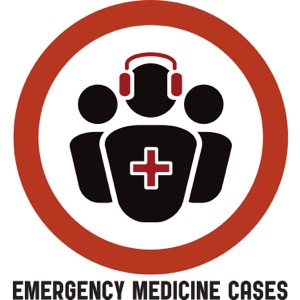EM Quick Hits 63 S-TEC and HUS, IM Epinephrine in OHCA, Dengue, Geriatric Trauma Imaging, TTP
Emergency Medicine Cases - A podcast by Dr. Anton Helman

Categories:
Topics in this EM Quick Hits podcast Stephen Freedman on pediatric bloody diarrhea, S-TEC and hemolytic uremic syndrome (1:06) Justin Morgenstern on the evidence for IM epinephrine in out of hospital cardiac arrest (27:04) Matthew McArther on recognition and ED management of dengue fever (33:56) Andrew Petrosoniak on imaging decision making in trauma in older patients (47:20) Brit Long & Michael Gotlieb on recognition and management of TTP (59:10) Podcast production, editing and sound design by Anton Helman Podcast content, written summary & blog post by Brandon Ng, edited by Anton Helman, March, 2025 Cite this podcast as: Helman, A. Freedman, S. Morgenstern, J. McArther, M. Petrosoniak, A. Long, B. Gotlieb, M. EM Quick Hits 63 - S-TEC and HUS, IM Epinephrine in OHCA, Dengue, Geriatric Trauma Imaging, TTP. Emergency Medicine Cases. March, 2025. https://emergencymedicinecases.com/em-quick-hits-march-2025/. Accessed April 16, 2025. Pediatric bloody diarrhea: Shiga Toxin Producing E. Coli (S-TEC) and HUS Consider obtaining a stool specimen or rectal swab in the ED for PCR testing (not culture) to detect S-TEC, Salmonella, Shigella, and Campylobacter. Which children with bloody diarrhea require bloodwork? Most children with blood in stool do not require blood work. Indications for bloodwork include: * Hemodynamic instability * S-TEC is high on your differential (bloodwork may be useful as baseline) * Recent travel with bloody diarrhea and fever * Close contact with S-TEC cases (~10% household transmission rate) When to suspect S-TEC? * Severe crampy abdominal pain * >15-20 small frequent, mucousy, bloody stools per day * Low grade fever * Signs of microangiopathy (e.g. petechiae, jaundice) * Endemic area Children generally do not require stool O&P for acute diarrhea but should be considered for chronic abdominal pain, chronic diarrhea, or failure to thrive. When to test for C.difficile? There is a high carriage rate of C. diff (up to ~50% in children under 2 years old). Consider C. diff testing only in children with risk factors such as recent antibiotic use or hospitalization, or as a second line test on follow up if bloody diarrhea persists that is not noted to be from another bacterial etiology. Why is it important to recognize S-TEC? A complication of S-TEC infection is Hemolytic Uremic Syndrome (HUS), caused by Shiga toxin accumulation in the kidney which leads to the HUS triad: acute kidney injury, hemolysis, and thrombocytopenia. * Shiga toxin 2 (STX2) is specifically associated with a 15-20% risk of HUS in children <5 years * HUS development increases risk of dialysis to 50-60% within 1 week * Differentiating between STX1 (<1% risk of HUS) and STX2 toxin can help risk-stratify patients How to risk stratify a positive STEC result: * Assume blood in stool to be STX2 producing STEC until proven otherwise (non-bloody STEC unlikely making Shiga toxin 2 and unlikely to cause HUS) * Determine duration of diarrhea: HUS develops a median of 7 days after diarrhea onset * Diarrhea >10 days = low risk of HUS * Determining if toxin result is STX2+ (high risk) How to manage high risk patients with confirmed S-TEC? * Manage dehydration aggressively (volume depletion is associated with adverse outcomes in H...
